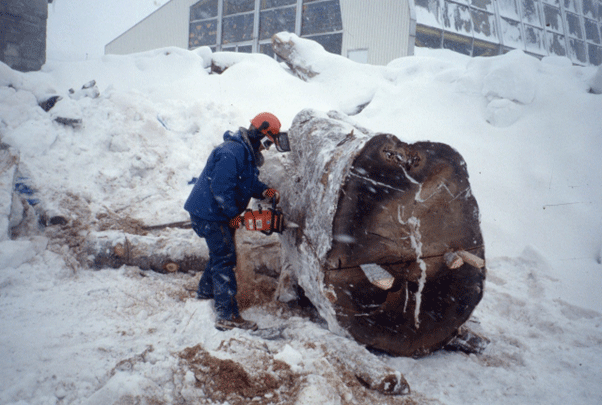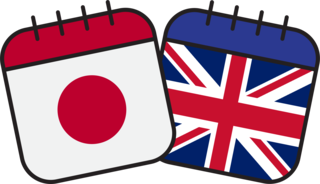
Otoineppu: Conversation with David Nash and Ryoko Sunazawa, moderated by Jonathan Watkins
Otoineppu: Conversation with David Nash and Ryoko Sunazawa, moderated by Jonathan Watkins
- 16 June 2023
- 6:00pm – 7:30pm
- Daiwa Anglo-Japanese Foundation, 13 / 14 Cornwall Terrace, London NW1 4QP
- https://dajf.org.uk/exhibitions/tentacle-by-bikky-sunazawa
- +44 (0)20 7486 4348
- events@dajf.org.uk
- Tweet
Otoineppu is the smallest village in Hokkaido with fewer than 700 residents. The village is famous for its craftsmanship and art, and has wood carvings in many places, including the post office and railway station. David Nash and Bikky Sunazawa were inspired by Otoineppu’s pristine nature and wild forests and chose to work there.
Bikky Sunazawa (1931-1989) moved from Sapporo to Otoineppu in 1978. He spent much of his time in the nearby forests, immersing himself in nature in order to distance himself from the distractions of a rapidly changing modern society. The primaeval forests of Japanese spruce and Mongolian oak provided a vast array of materials for Bikky to experiment with and inspired his imagination. He produced many works while living in Otoineppu, surrounded by majestic nature, up to his death in 1989. The proposition of his work is as relevant today as it was then.
David Nash first visited Japan in 1982, and dreamed of travelling to and working in Japan’s northern islands one day; he longed to experience the drastic changes in the seasons. He visited Otoineppu for its trees three times during 1993 and 1994, in spring, summer and winter, to make artworks for his show “Spirit of Three Seasons” in Japan. Nash creates many of his works in North Wales and has also worked in locations across the world where he encountered new types of trees, unifying art with the natural beauty of nature. Which of Nash’s emotions were stimulated as he faced the unspoiled nature of Otoneppu? What are the characteristics of Otoineppu?
In this talk moderated by Jonathan Watkins, David Nash and Ryoko Sunazawa (Bikky’s widow) will explore artist practice in Otoineppu including the characteristics of the town, its natural environment and its seasons.
About the contributors
Jonathan Watkins (moderator)
Jonathan Watkins (moderator) has led Ikon for over 20 years, joining the gallery in 1999. Previously he worked for a number of years in London, as Curator of the Serpentine Gallery (1995-1997) and Director of Chisenhale Gallery (1990-1995).He has curated a number of large international exhibitions including the Biennale of Sydney (1998), Facts of Life: Contemporary Japanese Art (Hayward Gallery, London 2001), Quotidiana (Castello di Rivoli, Turin 1999, Tate Triennial (2003), Shanghai Biennale (2006), Sharjah Biennial (2007), Negotiations (Today Art Museum, Beijing 2010) and the Guangzhou Triennial (2012). He was on the curatorial team for Europarte (Venice Biennale, 1997), Milano Europa 2000, (Palazzo di Triennale, Milan 2000), and Riwaq (Palestinian Biennial 2007). He curated the Iraqi Pavilion for the Venice Biennale in 2013 and Floating World, Bahrain in 2017. In 2019 Watkins was the curator of Small Between the Stars, Large Against the Sky, the 9th Manif d’art Quebec City Biennial.
David Nash
David Nash studied at Kingston College of Art from 1963 to 1967 and at Chelsea School of Art (Postgraduate) from 1969 to 1970. Nash’s first solo exhibitions were held in 1973 at Queen Elizabeth Hall, York and at Oriel, Bangor, Wales. These rapidly led to a series of solo exhibitions throughout the UK and his international reputation was established after his first solo shows overseas were held in 1980 at Elise Meyer Gallery, New York and at Galleria Cavallino, Venice, Italy. Since then, he has continued to hold solo shows on an annual basis throughout the world. Nash’s work has also been included in numerous international key group exhibitions since 1970. These include The Condition of Sculpture, at the Hayward Gallery, London (1975), British Art Now: An American Perspective, at the Soloman R Guggenheim Museum, New York and tour (1980), British Sculpture in the Twentieth Century, Part II, at the Whitechapel Art Gallery, London (1981) and Aspects of British Art Today, at the Tokyo Metropolitan Art Museum in (1982).
Ryoko Sunazawa
Ryoko Sunazawa is Bikky’s widow.
Booking Essential | Admission Free
